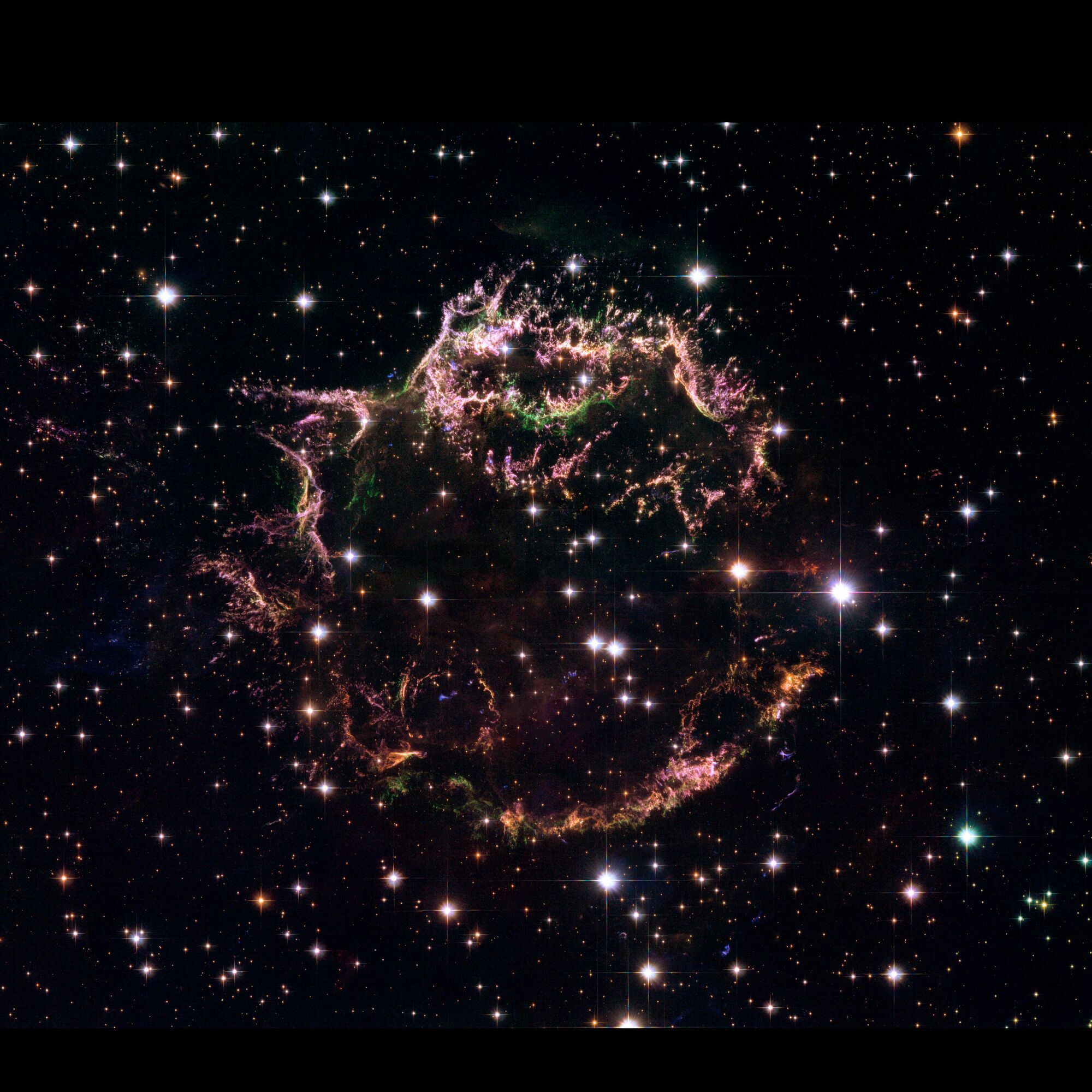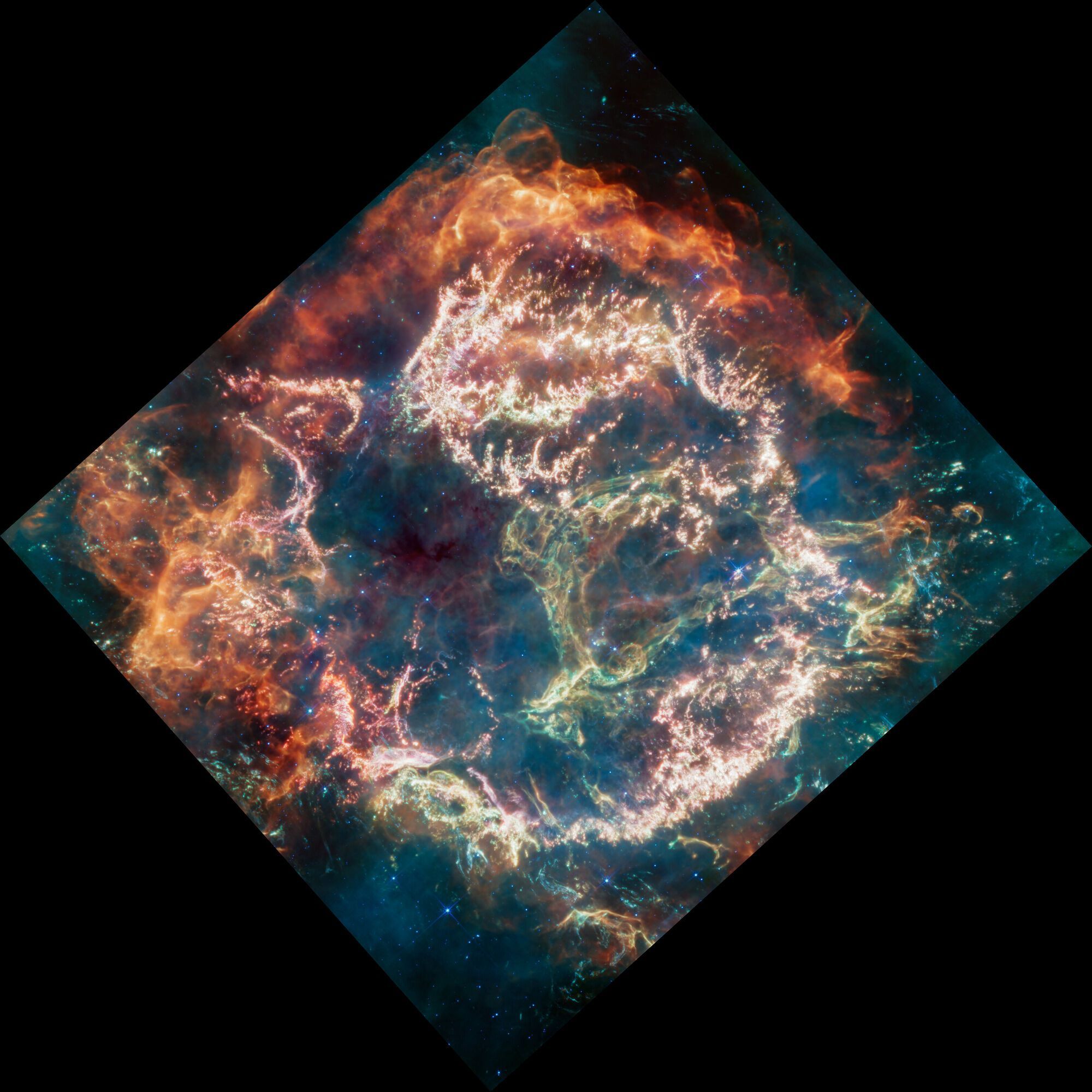Life
NASA manages to capture the aftermath of one of the most powerful explosions in the Universe: the spectacle is impressive
NASA's James Webb Space Telescope (JWST) has managed to capture an incredible sight caused by one of the most powerful explosions in the Universe that occurred about 340 years ago. It was the remnants of a star that existed in the constellation Cassiopeia.
The Inverse publication tells about the features of the image taken by the NASA telescope. In 2004, the aftermath of the explosion was also photographed by the Hubble telescope, but its image cannot be compared with the one taken by JWST. The photo shows how the dust residues from the destructive death of the giant star glow fiery orange and red when they come into contact with interstellar dust (to see the photo, scroll to the end of the news story).
The remnants of the giant star's catastrophic death throes are called Cassiopeia A and are located 11,000 light-years from Earth. Scientists are studying them to recover data on the life and death of the missing star.
The explosion occurred about 340 years ago when the giant star burned its last fuel, and without the pressure of nuclear fusion to counteract the star's crushing weight, its outer layers collapsed inwards in an instant. This triggered one of the largest and most powerful explosions in the Universe, spewing the star's contents into space.
The result of this explosion was a supernova, which is interesting because it is the newest in our galaxy.
Today, the cloud of gas and dust that once was a star has already reached a width of about ten light-years and is expanding further. As the outer edge of the supernova collides with the envelope of colder gas and dust that once surrounded the star system, it produces orange and red ripples that can be seen in the photo taken with the mid-infrared instrument.
Although the photo appears to be in colour, it was actually taken in the infrared spectrum and then converted to the colours that our eyes can actually see.
Astronomers hope that the new JWST data, which will be combined with data from years of space observations, will provide some clues about how galaxies like ours get their supplies of dust and heavy elements needed to form planets and life.
"It is difficult to explain the origin of this dust without looking to supernovae, which eject large amounts of heavy elements into space," the European Space Agency said in a statement.
As a result of such explosions, "elements such as calcium, which is found in our bones, and iron, which is found in our blood," as well as other elements that create new generations of stars and planets, are spread throughout the galaxy.
Earlier OBOZREVATEL told that NASA recorded a superpower explosion that shook the entire cosmos.
Subscribe to OBOZREVATEL's Telegram and Viber channels to keep up with the latest news.





























